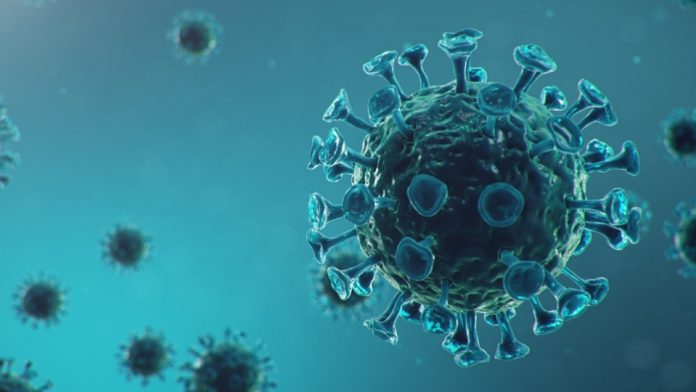Ontario reported another 3,436 cases of COVID-19 on Monday, as eligibility for vaccines opened to all residents aged 18 and older in hot-spot areas.
Adults living in the 114 specific postal codes designated as hot spots were able to start reserving appointments as of this morning, though some on social media reported long wait times or technical difficulties with the provincial booking website.
Minutes after bookings opened at 8 a.m. ET, the site showed an estimated wait of more than an hour, with tens of thousands of users in the queue. The province reported that as of noon, 138,655 appointments had been booked Monday.
This week and next, the province will send half of its vaccine supply to the hot spots, based partially on recommendations from the government’s science advisers.
Adults in some hot-spot neighbourhoods had already been able to make vaccine appointments, but not through the province’s online booking portal.
Eligibility expands further across Ontario on Thursday, when online bookings through the government portal open up to residents aged 50 and over. People with high-risk health conditions and some groups of people who can’t work from home will also become eligible.
Ontario has said it expects everyone aged 18 and over to be able to book a vaccine by the end of May.
Speaking to reporters Monday, Ontario’s Chief Medical Officer of Health Dr. David Williams cautioned that it can take approximately three weeks for people getting their first dose to build up immunity — and often longer in older individuals.
“We have seen people come back positive in five to seven days,” he said, reminding Ontarians to keep up with public health measures like physical distancing and mask wearing even after receiving their vaccines.
Williams also hinted at the possibility of an update to the province’s stance on outdoor gatherings, which have been prohibited among people from separate households under the existing stay-at-home order.
“We’re going to get some more updates with outdoor activities,” he added. It was not clear whether that meant the province is considering relaxing its restrictions on small gatherings outdoors.
Asked if May 20 is still a realistic date for relaxing the stay-at-home measures, Williams said he believes Ontario needs to have vaccinated more than 40 per cent of its population if it is to loosen restrictions.
“Many people are discussing it. And we’re trying to look at it as much as possible,” he said, but could not provide specifics.
“We need to get out of this third wave,” he said.
‘Short-changed all along’
But at least one of the hardest-hit regions in the Toronto area isn’t accepting online bookings from adults 18 and up living in its hotspots.
York Region’s medical officer of health, Dr. Karim Kurji, says there simply isn’t enough supply to support the move to allow all adults in the province’s 114 hotspots to book their vaccines. Three clinics in York Region closed early on Monday because of what Kurji said were shortages.
“We seem to have been short-changed all along,” Kurji told CBC News, saying he’s calling for York’s allocation to be boosted to 80,000 from 50,000.
“York Region, along with Peel and Toronto, has the highest number of cases on a daily basis in the GTA,” said Kurji. Meanwhile, it’s ninth on the list in terms of vaccine allocation per capita, he said.
Kurji also took issue with the way that hotspots were designated, saying the province appeared to be counting cumulative cases starting from the outset of the pandemic — also counting infections in long-term care homes whose residents have by-and-large already been vaccinated — rather than focusing specifically on infections in the third wave.
Plus, he said, the province relied on postal codes that were current in 2016, rather than existing ones.
Kurji added he has approached the province about his concerns but has so far received no response.
“There is no appetite, it appears, to correct these things,” he said.
“To the people of York Region, I would say I’m so sorry we’ve had to prioritize the distribution of the vaccines to the 35-plus groups in the hotspots,” he said. “When we can, we will be coming to the 18-plus.”
Millions expected in May
Public health units collectively administered 53,880 doses of vaccines yesterday, the fewest on a single day since April 5. The drop may in part be due to pharmacies running out of available AstraZeneca doses, which was expected to happen over the weekend.
Ontario’s COVID-19 vaccine task force said last week that while the federal government is working to secure more AstraZeneca doses, it is still not clear when or how many may actually arrive in the province.
As of 8 p.m. Sunday, a total of 5,378,249 people had had at least one dose, while 375,905 had gotten both shots.
Ontario has used just over 95 per cent of the 5,644,975 doses of vaccines it has received to date.
Millions more doses of the Pfizer and Moderna vaccines are scheduled to arrive throughout May, including 786,240 this week.
The province also anticipates some percentage of 300,000 doses the federal government is expecting from Johnson & Johnson to land in the coming weeks. Members of the task force said they haven’t yet heard exactly how much of the single-dose vaccine Ontario will get, but based on a per capita allocation it should be about 116,000.
































